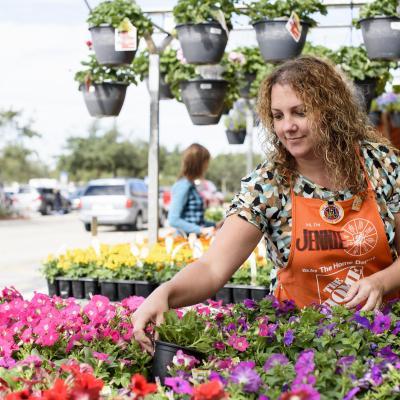
Thanks to a hot housing market and the advent of patio season, the Home Depot is reporting rosy sales and profits, with online orders especially strong.
The Atlanta-based
home improvement retailer says that in its fiscal first quarter, sales climbed nearly 5% to $23.9 billion, and same-store results rose 5.5%. (In the U.S., the jump was 6%.) Net earnings increased
to $2 billion, from $1.8 billion in the year-ago period, and the company raised its profit expectations for the full year.
In a conference call to discuss the results,
company executives called the positive trends “broad-based,” and says its Spring Black Friday event led to improvements in-store and online, with categories like mix-and-match patio,
outdoor power tools, mowers and chemicals offering stand-out results.
advertisement
advertisement
But its online results were especially robust, both in terms of customer satisfaction and increased sales,
which grew 23% in the period. “The flexibility and nimbleness of our supply chain is a competitive advantage,” says CEO Craig Menear. “This is particularly evident during our busy
spring selling season when regional weather conditions vary, resulting in spiky demand patterns. Operationally, nimbleness and flexibility carry over into our stores.”
It also
says its new online checkout process now results in an average time savings of about 20%, and that about 45% of its online sales are now purchased online and retrieved in the store.
Home Depot may be the largest player in the home-improvement world, but it’s not alone. NPD Group says that online sales of home improvement products increased 41% in the 12-month
period ending in March, taking the e-commerce home-improvement market to $10.9 billion in annual sales.
The report, based on NPD’s Checkout Tracking, which mines customer
receipts, says the fastest growth is coming from plumbing pipes and fittings, light bulbs and ceiling fans, with the largest online sales gains in home décor, light fixtures and area rugs.
And while Millennials are certainly a driving force, growing at the fastest pace, Gen X and Baby Boomers account for almost two-thirds of these online sales.